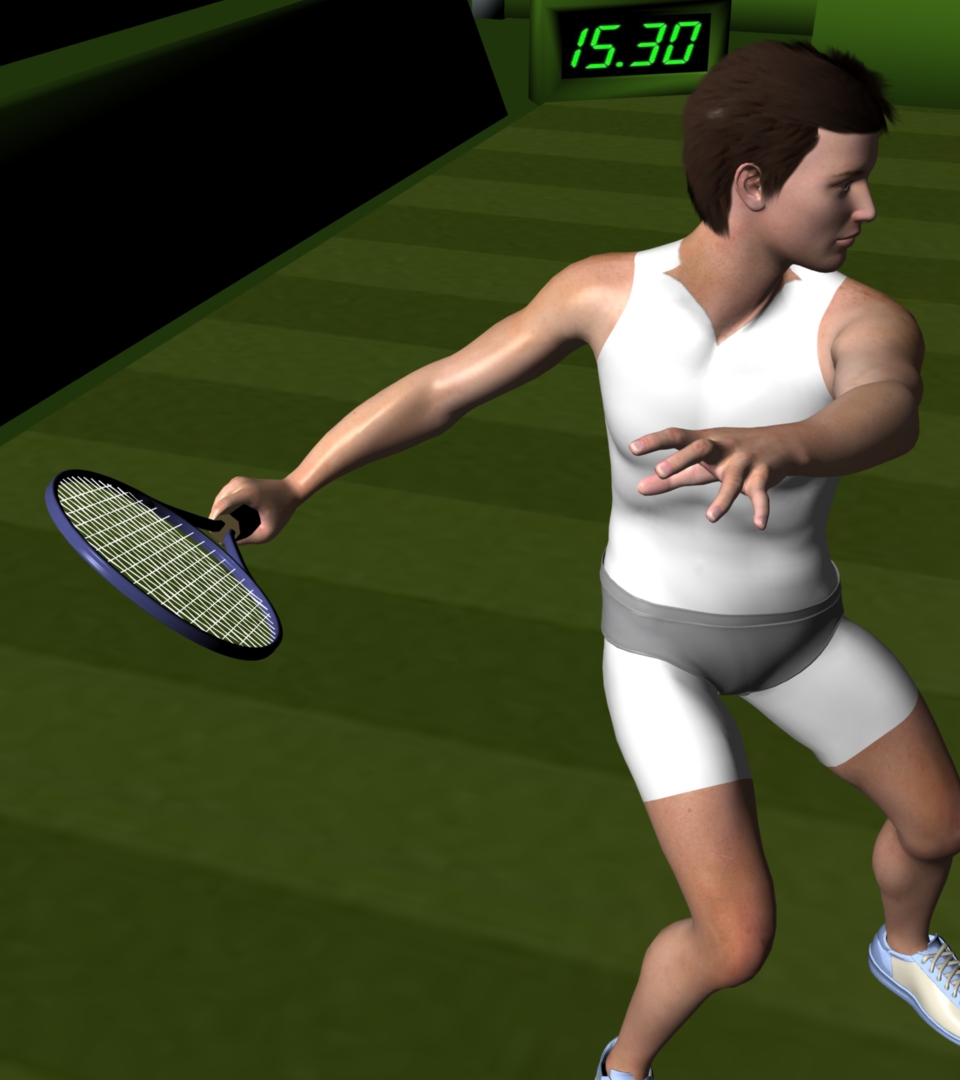Short Court Syndrome
Did it ever seem to you that a tennis court is just too small? Do you sometimes find yourself whacking away at your groundstrokes, feeling great, but hitting everything a bit long or wide? Even the balls you do put into play worry you because they seem to be clustered right around the baseline; and you know that is bold - your splash points should cluster around safe targets halfway between the service line and the net. You feel a good snap, you are getting good pace, your footwork is good, and you are hitting the ball in the center of the racket for a change, but you can't get the balls to fall into the court. The court seems too small. After a while, you notice you are also hitting the net strap, likely in a vain attempt to control the ball back down into the court. You are reminded of the Impossible Dream Syndrome because it seems that any ball you try to hit flies long. Perhaps overnight your muscles have grown so strong that no ball you hit could ever fall in.
Have you checked your topspin lately? Or do you assume that if you hit a topspin groundstroke, it will be endowed with sufficient topspin to keep your balls where they belong? And, by the way, how much topspin is enough? Is there such a thing as too much topspin? The answers you are looking for are: No, you never check your topspin. Yes, you assume you are hitting sufficient topspin because you intend to hit with topspin.

The correct amount of topspin to hit is as much as you can hit without losing solid contact or producing too little pace, but there is no such thing as too much topspin. This last may shock you because there are so few parameters in tennis that follow the rule "...the more the better."
Imaginary Topspin
Topspin is the exception to the rule "Moderation in all things!". To supplement another popular platitude; "You can't be too rich, too thin or hit with too much topspin!". Topspin increases both consistency and effectiveness. Topspin allows you to hit the ball through a large window over the net and still hit your opponent's court. Topspin shots are much more difficult for your opponent to hit than flat or slice balls: Topspin balls bounce high, bounce fast and accelerate after they bounce, so they are hard to address and hit with authority. They also have the delightful tendency to dip down to the feet of an approaching adversary who harbors the desire to attack you from the net. Topspin is essential for hitting with depth, pace, and safety. It is the only way to be aggressive from the baseline. So, if topspin is so wonderful, why might we neglect the topspin of our groundstrokes? Our problem is that we don't know how to measure the topspin of our balls. When you are practicing with a ball machine, it is easy. The degree of topspin correlates pretty well with the height at which our balls hit the back fence. If they hit the fence at shoulder high or more on one bounce, that is plenty of topspin. Waist high, not so much. During a game, you can't measure topspin that way. The easiest test of topspin during play is to estimate how many balls you hit in play that you sure are going out compared with how many you hit out that you are sure will fall in. The ratio of surprise ins to surprise outs is an excellent metric for the degree of topspin.
Once you have established that your groundstrokes are topspin deficient, all that remains is to focus on increasing the amount of topspin in your game. Ramping up your topspin is so easy to do and so immediately rewarding that you do not have to delve into the dark reaches of your mind and root out the psychopathology that led you away from hitting with topspin in the first place. Just keep an eye on your spin level, and you will do fine.
